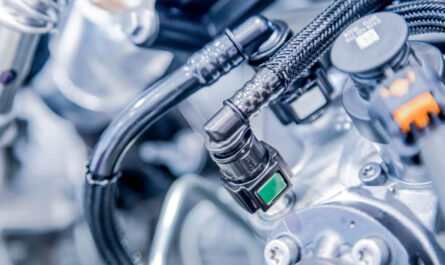The In-mold Labeling Process Explained
In-mold labeling refers to a printing process where labels are molded directly into plastic products during the manufacturing process. Unlike pressure-sensitive labels which are applied after molding, in-mold labels are injected along with molten plastic directly into the molding tool or die. This allows the label to become an integral part of the finished product.
The in-mold labeling process begins with designing a label specifically for in-mold application. These labels must be made from plastic materials that are compatible with the plastic being molded such as polyethylene, PVC or polypropylene. The label design is then digitally printed onto a plastic film which is automatically fed into the injection molding machine.
As the molten plastic is injected into the molding tool at high pressure and temperature, it fuses with the in-mold label embedded in the tool. The label and plastic bond together during cooling and solidification to form a unified part. When the mold opens, the newly molded plastic product containing the in-mold label is ejected in one piece, without any need for secondary application processes.
Key Benefits of In-mold Labeling
Permanence: Since The In-Mold Label is integrally fused with the plastic part during molding, it becomes virtually inseparable. This prevents labels from peeling, cracking or falling off over the product’s lifespan.
Durability: Being structurally reinforced by the surrounding plastic, in-mold labels can withstand wear and tear, harsh chemical or pressure washing, abrasion, impacts and other stresses much better than pressure-sensitive labels.
Tamper-evidence: It is very difficult to remove an in-mold label without damaging or destroying the plastic part. This acts as a safeguard against product counterfeiting or tampering.
Aesthetics: In-mold labels offer precise color registration and print definition since they are molded within microns of the product surface. This allows for more visually appealing graphics compared to glued-on labels.
Customization: Complex multi-color and cut-out designs are possible with in-mold labels by using different customized label inserts in the tool cavity.
Cost-effectiveness: In-mold labeling streamlines production by eliminating separate application, curing and inspection stages. This results in lower labor, material and total costs per unit.
Enhanced Design Flexibility
In-mold labeling expands creative possibilities for product designers. Complex three-dimensional labels can now be integrated seamlessly into cylindrical, curved or irregularly shaped plastic parts that were previously difficult to label using pressure-sensitive methods.
Concave or convex labels can precisely match the surrounding contours for enhanced visual appeal. Cut-out windows or see-through portions allow underlying graphics, color-changing inks or light diffusing effects. Embossing and debossing further augment texture.
Some innovative applications include curved labels on bottles or blister packs by mapping digital graphics directly onto the mold surface. Three-dimensional Braille labels make medical devices and appliances more accessible. Hollow in-mold shapes enable miniature lighting or sensory effects.
Industry Applications
With its array of merits, in-mold labeling has been adopted across many industries for permanently identifying a wide variety of plastic consumer goods, industrial parts and medical components.
Cosmetic products greatly benefit from the high-resolution graphics and fingerprint-resistant finish of in-mold labels. Electronics benefit from strong, abrasion-proof labeling that endures the product lifetime. Automotive and appliance labels must legibly last through harsh outdoor exposure and frequent cleaning.
Healthcare products demand tamper-proof identification, while food containers need labels securing brand promotion through numerous wash and fill cycles. Durable equipment labeling withstands weathering yet allows complex compliance messages.
As plastic manufacturing continues innovating lightweighting and miniaturization, in-mold technology helps create more vivid and intricate labeled surfaces that also streamline production. Its combination of functionality and aesthetics ensures in-mold labeling has a vibrant future.
In-mold labeling has revolutionized plastic product identification by integrally forming labels within molded parts. This unique process creates labels that are exceptionally durable, resistant to removal and well-suited for complex shapes and designs not possible with traditional pressure-sensitive media.
By simplifying manufacturing and enabling new design possibilities, in-mold serves a vital role advancing plastic part identification. Its proven performance across industries also highlights why it has emerged as a preferred labeling solution offering value far beyond basic functionality.




